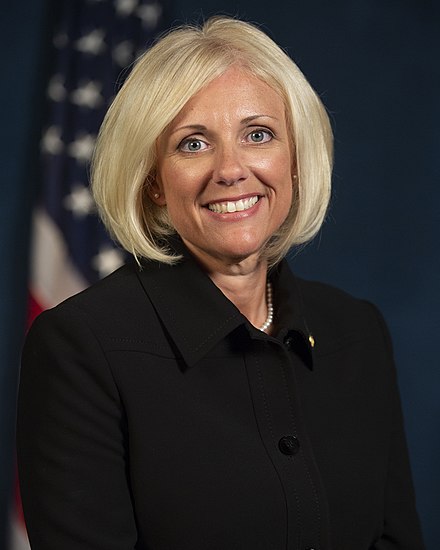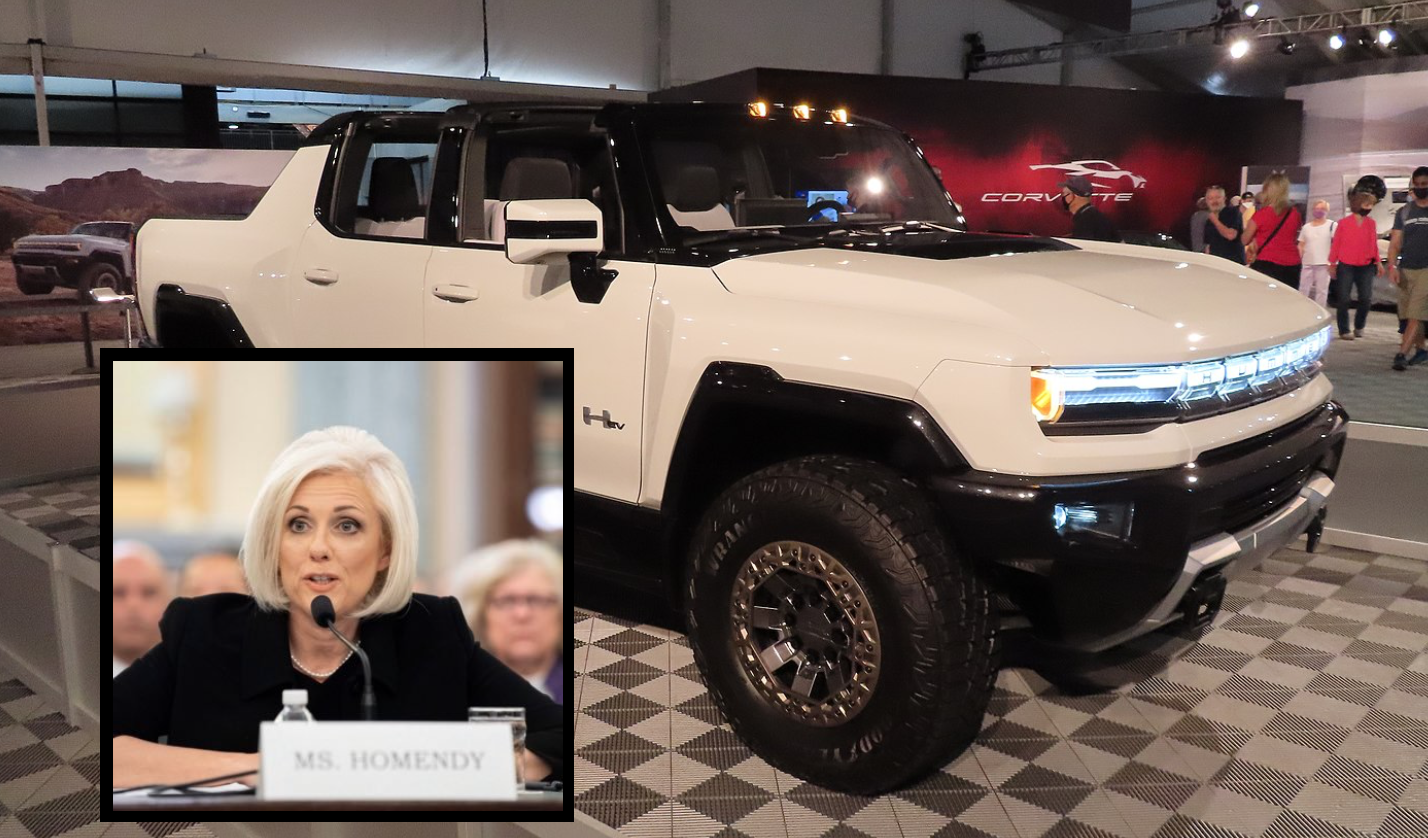The following was excerpted from an address to the Transportation Research Board delivered by Jennifer Homendy, the chair of the National Transportation Safety Board. It has been edited for length and is republished with permission.

When I was asked to deliver this keynote address, I considered talking about safety challenges and opportunities in aviation, commercial space, maritime, pipelines, rail and transit, and on our roadways — an area I have a tremendous passion for.
I considered talking about our recent research on turbulence, which is aimed at preventing injuries to flight attendants and passengers. Or the safety risks of lithium-ion battery fires in electric vehicles.
I want to take a second and mention that I’m concerned about the increased risk of severe injury and death for all road users from heavier curb weights and increasing size, power, and performance of vehicles on our roads, including electric vehicles.
A GMC Hummer EV weighs over 9,000 pounds, up from about 6,000 pounds. Its gross vehicle weight rating is a staggering 10,550 pounds. The battery pack alone weighs over 2,900 pounds — about the weight of a Honda Civic.
The Ford F-150 Lightning is between 2,000 and 3,000 pounds heavier than the non-electric version. The Mustang Mach-E, Volvo XC40 EV, and RAV4 EV are all roughly 33 percent heavier. That has a significant impact on safety for all road users.
Now I want to be clear: I’m inspired by the Administration’s commitment to phasing out carbon emissions. We do have a climate crisis that needs to be addressed. The U.S. transportation sector accounts for the largest portion of U.S. greenhouse gas emissions, and I firmly believe it is a human right to breathe clean air.
But we have to be careful that we aren’t also creating unintended consequences: more death on our roads. Safety, especially when it comes to new transportation policies and new technologies, cannot be overlooked. Ever.
https://twitter.com/DavidZipper/status/1613891008235974656
What I want to focus on today is why we do what we do at the NTSB and why I’m so passionate — why we’re so passionate — about safety.
We’re fighting for the nine people who died two Januarys ago in Avenal, California, in a horrific crash that could’ve been prevented with speed limiters and in-vehicle alcohol detection technology — two things the NTSB has been calling for for years. Seven of the victims were children. The oldest was 15, and the youngest was just 6 years old.
We’re fighting for the 43,000 people who die annually on our roads and the millions more who are injured. Not just drivers, but all road users. No matter their race, ethnicity, ability, income, or where they live. No matter whether they’re walking, biking, rolling, or driving.
That is who the NTSB is fighting for — who we’re all fighting for. And let’s not forget what we’re fighting for: zero in every mode of transportation.
Plenty of people think zero deaths is an unrealistic goal.
I remember one op-ed called zero a “pipedream” when Secretary Buttigieg embraced the goal last year — the first U.S. Secretary of Transportation to do that. It was brave.
What about you? Who thinks we’ll never see a day with zero transportation deaths Every time I ask that question, no one wants to put their hand up. I understand.
Then think about a good goal. Should we aim to cut transportation deaths by 25 percent? How about 50 percent? By when?
Keep that goal in mind.
https://twitter.com/PCMag/status/1613630722337607708
Now, let me ask you: what’s an acceptable number of transportation deaths for your family?
Zero just became real, didn’t it?
There’s no acceptable amount of injury or death when it’s our colleague. Our best friend. Our partner. Our parent. Our son. Our daughter.
When we say zero is impossible, there’s an unspoken caveat: as long as “my” people are safe.
When anyone plans for more deaths, calling them projections, it says there’s an “acceptable” number of lives lost.
It says some death is OK.
It says some people don’t count.
That’s the message we send to grieving parents.
Hear me: it’s not acceptable. Not a single life lost. Zero has to be just as real for them as it is for us.
We must care about the safety of strangers: people we will never meet. Because it’s the right thing to do. It’s what drives everyone at the NTSB and many of you.
Getting to zero isn’t easy. You all know that. [But] what I’m about to say might surprise you: to take on a challenge as big as zero and succeed, we need more than smarts.
Don’t get me wrong; we need your research to inform new policies, new systems, new regulations, new laws — especially when we have so much advancement in new technology. And we need safety champions to bring it all to life.
We need everyone in this fight.
That’s the power of the Transportation Review Board and everyone here: you have incredible power to help get us to zero.
But we also need something else — something less tangible.
We need to be fearless: unafraid to open our hearts to the preventable pain of transportation disasters and to fearlessly pursue solutions.
Fearless in refusing to take “no” for an answer.
Fearless in having the political will to do the hard things, say the hard things.
Fearless in the conference rooms and boardrooms where we work. In our communities and in our personal lives.
Fearless.






